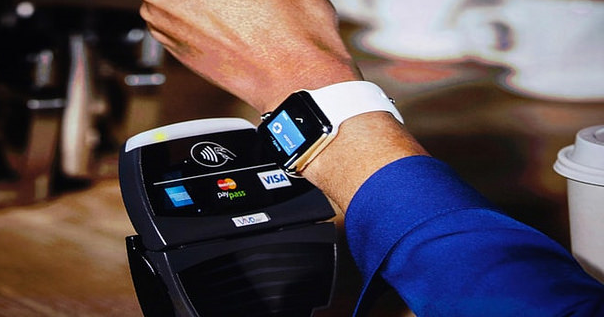Mobile Payments is the hottest topic in the market now. If you are following the payments industry you would be pleasantly surprised to see the amount of interest in this area from various players which include Financial Institutions like Banks, Card Networks, Processors, Telecom providers, Silicon Valley Giants, small payment startups, retailers and pretty much everyone you can think of.
It’s all Steve Job’s fault:
The iPhone for all we know started a mobile revolution where upgrading the latest OS firmware is something you see customers discussing at coffee shops in the morning. (Did you upgrade to iOS7? I hate the color themes. I am still at iOS6 and love it!). Not to digress too much, but the iPhone opened up a cottage industry of all the things you could do with the device and Google couldn’t sit there and let Apple have all the fun. Thus Android was born (which opened up its own industry of phone makers). The latest browser stats show Chrome and Android browser leading the pack in usage while Firefox, IE and opera losing market share.
Facebook was fun with mobile, so was Instagram, Twitter and all the lifestyle apps which “made” you more productive. It was quite natural that mobile devices evolved to add payments as the next killer app – except the existing payment initiatives in mobile have quite underestimated one fact. The customer didn’t find the idea of paying with a plastic card too hard on the first place. What is the mobile wallet value proposition? Just replacing the leather wallet with a mobile wallet app which can store payment and other credentials does it for customers?
The mobile payments landscape is quite fragmented with a lot of confusion of what really constitutes the ecosystem. Here are the major categorizations:
Mobile at the Point of Sale (Pay using your phone)
–Consumer payment method utilizing NFC, QR Code etc.
–Google Wallet, ISIS, Square Wallet, PayPal Wallet
Mobile as the Point of Sale (Accept payment with your phone)
–Merchant utilizes mobile device to process transaction(POS)
–Paypal, Square, Intuit, ProPay
The Mobile Payment Platform
–Broader mobile payment platform, typically a mobile wallet
–Utilizes NFC, Cloud, QR Code, GeoLocation, GeoFencing and Proximity
–Google Wallet, PayPal, FIS Paydiant, Level Up, Dwolla, Square
Direct Carrier Billing
–Purchases made via mobile phone – charged through wireless carrier
–Zong, Boku, Mopay, Any Telco issued payment app.
Closed Loop Mobile Payments
–In-store only transactions
–Utilize QR codes, Proximity payments
–Starbucks, Level Up, Square Wallet, PayPal (Closed Loop Offers)
What does this mean to the average consumer on the street who wants to pay with their mobile? A lot of confusion. Most of this arises from the fact that there is no standard way to make a payment from the phone. If the GPS technology we use on the phone was similar to what we have in mobile payments today, we probably won’t have most of the location aware apps which make our lives easy(Maps, Yelp, Offers, FB, the list goes on). A good Fintech friend (Matt West) once said he will validate the success of any consumer technology if his mom finds it easy enough to use. Do the Mobile payments solutions today pass the Matt West’s mom test?
What is the primary issue in adoption?
Really the primary issue here is – Do you want one wallet to store all your credit cards and hope that the POS terminal merchant has a way to recognize it? Or do you want to have individual closed loop solutions like Starbucks Mobile app? (Rated as the #1 mobile payments app). An average customer would probably have certain shopping preferences of where they would shop. Existing usage trends have shown that customers download and use Starbucks app and Target RedCard app more due to their richer closed loop experience. A generic mobile wallet can still be a attractive value proposition in locations where they shop infrequently (A gas pump for example).
In a twitter conversation I had with Guillaume Lebleu and Brad Leimer about payments Guillaume mentioned the idea that The mobile wallet is your “transaction browser”, something you’ll use for transactions you don’t have a dedicated app for. I agree with his idea of having dedicated apps for most frequent use and have a generic payment wallet for merchants who do have a native app combined with a wallet. Brad mentioned the fact that there should be a unified backend to make payments simpler.
Integrating Mobile Payments at the Mobile OS Layer:
A truly well thought out mobile wallet would arise only if the major mobile OS players decide to build that as part of a new payments API. Currently these providers (Apple, Google, Amazon, Microsoft) have provided ways to do in-app billing(mostly used for games and digital subscriptions) but to my knowledge they do not have a way for a closed loop wallet application to securely process a payment. All of these successful closed loop systems have their own cloud based payment/auth mechanism which are custom built.
Unified Payments API hooks:
If the mobile OS can provide a payment API hook that an app can utilize, retailers can build their version of a closed loop rich app similar to Target or Starbucks that can be customized with their specific offers and loyalty programs. To make something like this to work, the mobile OS has to provide a payments API infrastructure which is present in the cloud (and not on the device). This may use the Secure Element or shouldn’t have to. It can store most of your wallet information in the cloud and let you manage the cards in the cloud (Similar to Google Wallet or PayPal). This card on file information can be represented as a secure payment token within the mobile device (not the actual card details themselves, but a reference to the card in the cloud store). In case of Apple, this could be iCloud, Wallet for Google, Xbox Live for Microsoft.
When a retailer built closed loop custom app wants to utilize payment information, it requests access to this wallet from the underlying OS. (Similar to how they now request permission to use your GPS, Microphone etc). The OS provides a list of payment methods to the app which can be selected by the app’s payment handler (either set that card as a default mechanism or allow to change payment as required). If the workflow is built with the right hooks for extension, providers like Wallaby can inject value by recommending the the most optimal payment card which maximizing the user’s loyalty options. (Eg. Use the Discover card at electronics store to get 5% cash back type schemes).
An app built in this manner can enrich the in-store shopping experience by providing a view of the full inventory. What if an item you are looking for is not in that store? The mobile version of the retailers app may allow you to order and pay for it from the app and have it shipped to your home directory. The primary difference between what we have now in the likes of Amazon and iTunes app is, the customer gets to store more than one primary card on file, as well as have the liberty to choose where their wallet will reside and the OS will secure the storage and provide a uniform way to access payment apps within its platform.
Generic Wallet:
Many consumers may still find the generic mobile wallets like Google Wallet, ISIS, PayPal and Square quite attractive for their usage patterns. Any merchant who may not have a closed loop scheme can decide to be part of one of these generic wallets to accept mobile payments. Even these generic wallets can start utilizing the underlying OS Payment API hooks in a similar fashion explained above. Google Wallet already has a great way to inject Offers and Loyalty programs for merchants who decide to go through this route using their Wallet Objects API. Other players are offering their own way of launching these value add-ons to the generic wallet. (Level Up has launched its white label, PayPal with its Beacon, Dwolla with its POS payment option).
So who gets to manage this cloud wallet?
This is an interesting question. The payments landscape is big enough to accommodate more than few players. Some people are comfortable with their Banks storing this wallet information. Some are comfortable with Apple, Google, Paypal, Amazon handling this cloud store. Some may trust Visa/MC/Amex/Discover with this function. This will once again be a turf war where once you get locked into an ecosystem of Apple or Amazon or Google, you may decide to stay with them due to the convenience factor.
The next generation Payment API/Wallet?
Add the ability to store Bitcoin and other alternative digital currencies in this infrastructure and we maybe truly looking at a next generation wallet which can be the payment wallet of the future. A lot of innovation is happening at the payments space and its a gold rush. The OS providers wield a considerable amount of power by acting as the gatekeepers of mobile commerce which are facilitated through the mobile devices used by consumers. As long as they can keep the payments functionality simple and pass the Matt West’s Mom Test, we should see mobile wallets playing an integral role in the future of payments.
The latest Android edition (KitKat) has released with new Host Card Emulation (HCE) feature which is a great first step in providing OS level integration for Payment apps. Read more about it here.
Update 2:
Cherian Abraham has done it again with an excellent analysis of Android/Google’s strategy on HCE. You can find it here.
 2007 was a watershed moment in technology. The iPhone redefined the concept of personal computing and the world as we knew it was never the same. In just a decade, we have seen the proliferation of smart devices in every aspects of our life. We take for granted the various conveniences offered by our smart phones.
2007 was a watershed moment in technology. The iPhone redefined the concept of personal computing and the world as we knew it was never the same. In just a decade, we have seen the proliferation of smart devices in every aspects of our life. We take for granted the various conveniences offered by our smart phones.

